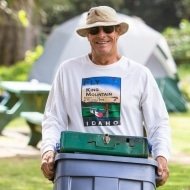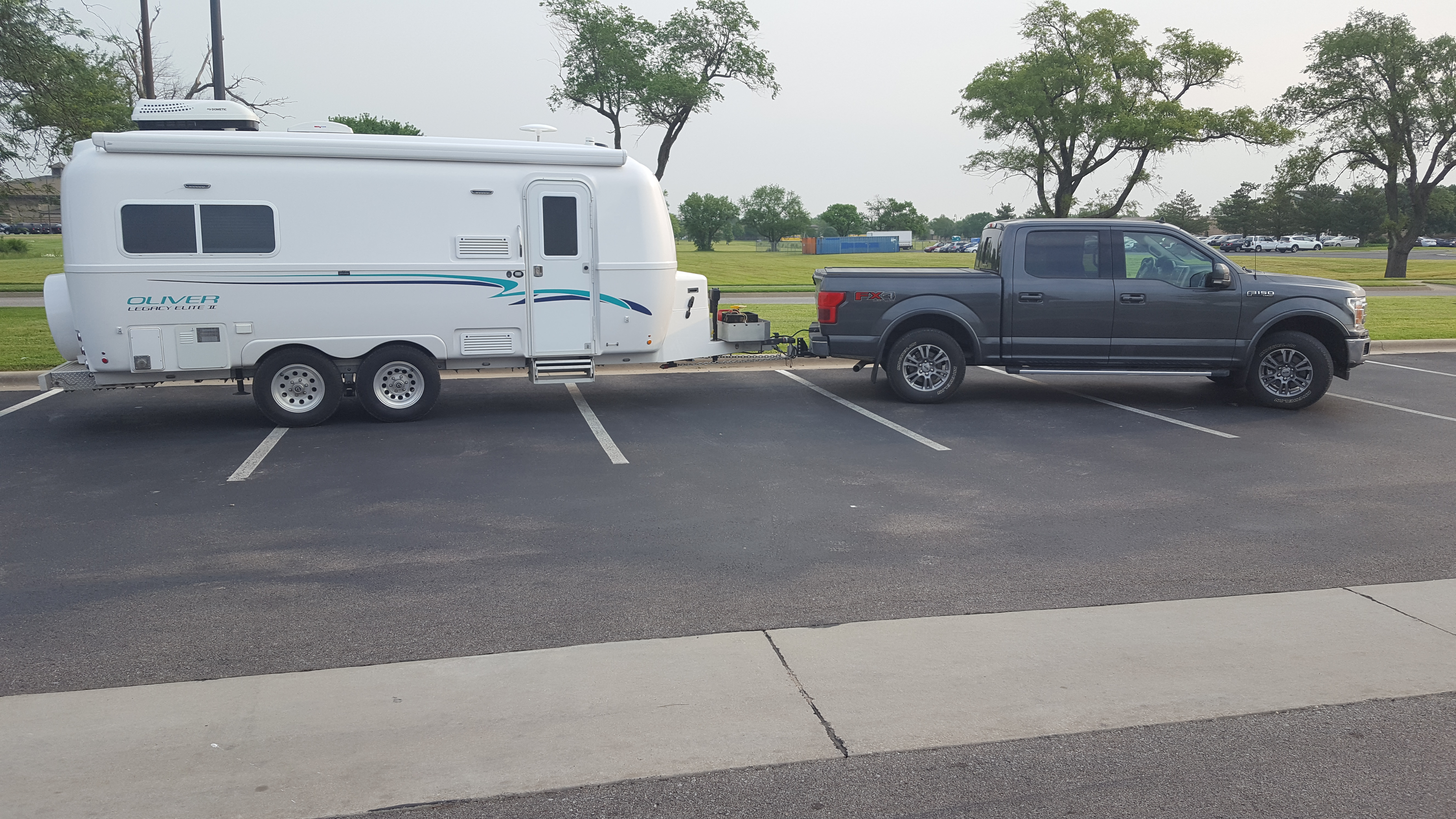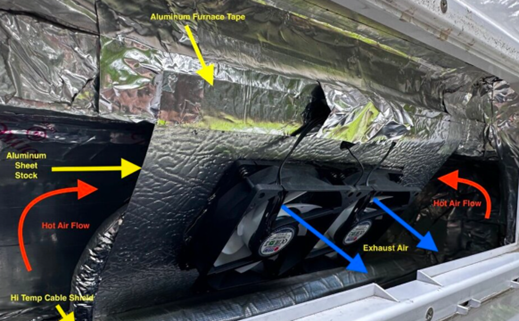-
Posts
2,148 -
Joined
-
Last visited
-
Days Won
62
Everything posted by Geronimo John
-
I periodically mention especially these two safety tips, mostly for new owners to the forum.... and to keep especially these three safety tips "top of mind" for us older ones.
-

BRAKES WORK... 2019 OLIVER ELITE II #448
Geronimo John replied to BoondockingAirstream's topic in Mechanical & Technical Tips
I agree. Sadly, some folks are just a bit.... odd. Glad you are not one of them. 🙂 GJ -
Likely the first item AI answered with: Brand Name KNKA is a brand specializing in environmental home appliances such as dehumidifiers, air purifiers, and humidifiers. According to their official website, the letters stand for the slogan "Keep Natural Keep Advancing". Other potential meanings Kanka (Turkish slang): The word "kanka" in Turkish is a common slang term for "buddy," "pal," or "bro" and is a shortened form of "kan kardeşi" (blood brother/sister). Kaṅka (Sanskrit): In Sanskrit, Kaṅka (कङ्क) is a word with multiple meanings, often referring to a type of bird like a "heron" or "curlew". NKA (Medical abbreviation): In a medical context, the abbreviation used is often NKA, which stands for "No Known Allergies". K, Ka (Radar detection): When discussing radar detectors, K-band and Ka-band are frequency ranges used by police radar guns. Ka is short for the German word kurz-above, meaning "short".
-
Bet that experience resulted in a few "bad words" as another famous owner has had. Glad you were not hurt and figured it out. One suggestion that many owners have adopted when working on the tires and/or axles, or for that matter anything under Ollie, is to leave the trailer connected to your 6,000 pound anchor (TV). When doing so, tie flagging to the steering wheel as a reminder not to drive off. The anchor will help stabilize things a bit. Another is to try always to do such work on a "Hard Stand" such as asphault or concrete. If not on such a surface, place dunnage under your jack feet to reduce the possibility of one of the jacks sinking in a soft spot. This has happened before. GJ
-

Engine Seizure - What I Learned
Geronimo John replied to Cort's topic in Mechanical & Technical Tips
Cort: Wow, between Leaf Springs, Lug Nuts and a Blown Engine you've had a tough season for sure. I hope the bad karma truck passes you by for awhile. May only Good luck and sunshine visit you! GJ -
Steve great picture! GJ
-
Doing some more research: Bad News: Apparently this problem was documented in 2021 in side by side comparison video. They states that the Brand B was 90% there, and only needs $5 in parts. Suggest you view this one. This now could be a class action. Good News: Looking at the video it is evident that the problem COULD BE FIXED. Question I have is did DF change the design of their batteries to fix the problem back then? Or did they ignore the warning? GJ https://www.youtube.com/watch?v=Tt0joJc9HPo&t=294s
-
That is a bit concerning. GJ
-
One of the very spot on early-on statements of this forum was from Patriot: Their first written response as shreadded in the YouTube response was characterized as "Gaslighting". I think that was a bit harsh. But it did not go over as well as I am sure DF wished. They would have been better served by stating that they have been made aware of the issue, and will commit the resources to determine the root cause. And then appropriate remediation as appropriate. They lost ground that can not easily be made up. But the PR damage is done, and it needs to be repaired. Above in this getting longer and longer thread, I postulated that the root cause of the heating, and the failure mechanism that resulted in the arching, was likely excessively amp draws on a per battery basis. DF needs a new approach here is what I recommend: Test beyond what OTT MountainOliver did. DF should test their 100's with progressively higher loading to the point where the battery B+ terminal base temperature approaches what is safe for the design. My SWAG is that it will tolerate up to 15 minutes at 200 Amps peak and likely 100 amps contineous to 10% SOC before the B+ temp is highenough to cause concern for the plastic deformation of the "plastic" structural support of of the bolt and post. As most of our OTT OE2 owners with the BB's have installed 3 BB's, that level would be fine for our occasional A/C on inverter with other loads such as the microwave also on line. Knowing the facts would basically would go a LONG WAY to ease the concerns on this thread for sure. Not to mention a lot of other owners across their RV customer base that operate as we do. This would also buy time to safely allow us to operate, while DF address others in higher need. But still address ours in due time. Secondly, Present their findings to their customers. If a redesign of the B+ post is needed, tell us. Finally, DF should state that they will stand behind their ten year warranty. And if they cannot do so that they will provide a prorated reimbursement of the cost we paid for them. These actions would put DF ahead of the issue as so wisely stated by Patriot. GJ
-
The 24 hours is sort of a standard. But the temperatue of the unit when it was not upright is a significant factor. The units typically sit in a warehouse. It may have "tempered air" not for the stored stuff, but for the workers. Then off into truck, train, and aircraft... all with potentially extremely low temp's. The warmer unit flows oil and refergerant down to the bottom of the coils. You get it, set upright and it may or may not come up to full room temperature before it is turned on. The oil/refergerant is viscus. The pump often does not have the power to move that incompressable fluid, rotor locks, amps surge, and blows the fuse. It would be wise to recommend 24 hours in a warm area to avoid this scenario. Then store it upright at all times. GJ
-
I think the videos shows is a terminal sparking that results in higher and higher temperatures as a result of Ohm's law. How? As the loose mechanical connection gets hotter corrosion is inevetiable. The corrosion increases the resistance of the connection, and slowly the connection resistance increases. To the point that the battery is damaged. I do not think that this is a cell related chemical reaction, but heat generation caused by the connection's resistance increasing and the resultanting increase in heat generations. This would continue until really bad things could happen ultimately leading to a melt down. If I understand this properly, the bolt goes thru a case plastic section and the copper terminal and to two jamb nuts. The jamb nuts are not coming loose, but the current has heated the case plastic section to the point that the bolt head, and likely a washer, moves part way through the case material as the temperature effects the plastic. This in effect causes the connection to loosen. Loose connections in electrical connections, especially high amperage potential connections, heat up. As the process contnues, the tremendous short circuit potential of these batteries cause the connection to get really really hot. If my analysis is sound, then the Lithium cells for the vast majority of the batteries that have been lightly loaded (See my post above) could have their tops laser cut off and a redesigned termial installed. Then fuse on a redesigned cover that structurally reinforces the terminal. Basically a solid bolted internal termination to the terminal seperate from the structural support for the terminal. GJ In the past five years especially, DF has diversified into other related markets and their substantially has likely increased. As such, they may be able to fund the repair of the batteries. Hopefully also the shipping costs as well.
-
Three way selector switch to the 712. One in, three options out. Would of course need three of the temperture sensors. GJ
-
For sure we KNOW where to put that temp sensor. B+ Terminal!!! Now which one. The Back of the battery bay, the middle b+, or the outside B+ .... That's a question for the Battery Smarter Owner to answer. GJ
-
Here to date, there has not been any reason to connect the free port on the 712 system. I even have the temperature probe in my spare parts onboard. Looks like the Victron folks did us a favor. GJ
-
And that Krea was the percise point of my above "Let's Ponder" post. Well said. For most of us with three BB's and a 300 Amp Fuse, we likely will not have a problem. The following uses some WAG's such as inverter efficiency (75%) and disscharge voltage of 12.5V. Both of which are just numbers are WAGS. But for illistration the following provides a basis for "Pondering Further" for a single 100 AH BB install: A 2,000 watt inverter overloaded could draw for a moment at least: (2000W / .75 ) /12.5V = 211 amps. . A 3,000 watt inverter overloaded could draw for a moment at least: (3000W / .75 ) / 12/5 = 320 amps. Neither likely would blow the 300 amp fuse. But over time, repleated again and again, then it is more than just possible that the BB design would become a problem for such installations. Yes we all could blow holes in the above "Hypothetical" example. But the underlying concept likely explains why some installs out there are having problems. Dragon Fly likely will be redesigning their B+ terminals as is obvious. But do I see a voluntary recall in the cards. Not likely, as it could bankrupt their company. As such it will likely be necessary for a federal recall to be demanded for the installed fleet. On the other hand, is it possible for Dragon Fly to redesign the B+ termina? Sure. They may even come up with a voluntary recall process to update those terminals for free, but likely we will be eating the shipping costs. But in the meantime to stick us with fees and charges, not to mention shipping costs to verify they have a known problem is a bad business decision. Think Ford: Cam Phaser Mess approach: Deny, Stall, Think Toyota: Cam shaft approach: Admit, Apologize and Fix IT, GJ
-
I Chris: Thanks for testing the power consumption by setting. As most of our time is boondocking, power consumption, even at these low levels, is always a consideration. With a ducted setup, just running at 60% or 70% for most situtations sure looks like great sweet spots. GJ
-
I have the titan fan system, but the controller was defective. Just been running it in manual until the fans die. When in use, my fans run 24/7 at a moderate speed. Will be replacing it with the already purchased Beech larger fans. My plan was to mount them in some sort of manner to create a ducted fan approach. Thus eliminating teh flow of outside air into the top vent area. This would allow a lower fan speed to get the same amount of cooler air flow from the below vent. Your picture closely approaches this concept. Best I have seen so far. I also like your use of the thin sheet alumnum. Easy to work with and inexpensive to boot. It appears from the picture that you have covered about 3/4 of trhe width. So I would call it a mostly ducted approach. I am wondering why you didn't just cover the full width to move all their discharge to be hot air from the frig, not a mixture of hot air and cooler air from the sides being sucked in the top vent? Concerning the control module placement, I'll likely be using JD's approach and mount it inside the upper cabinet. Concerning the power source, WAGO is the "way to go" since I have already done this for the Titans. But for a first time install another owner may want to check into the existing fan power source ...if it is active when the frig is on. Creative ideas you have emplyed and thanks for the post. GJ
-
I am impressed that Pat Radack took the time to search the archives and then posted. Well done Sir! And welcome to the family. Maybe not Craig's list, but I am aware of two OTT's that were destroyed and totaled. They went somewhere and likely were parted out. But your point is well taken. When I'm worried about where I've parked our Ollie, I remove the fuse to the front jack after I have lowered the tongue all the way down. Then I put a locking collar on the hitch, and pull the safety chaines up to the front box and padlock them there. Possible Future Enhancements: But I'm thinking of a couple of hidden game cameras and several of the anti-theft tracker disks. Maybe post a sign that there are 8 of them in/on the trailer even if there is only two. But I would like to learn about the trackers with battery back-up. Maybe a motion sensor that would put 50,000 volts to the hitch to take out the theft tow vehicle electrical system. Oh, June says that would also take out our Ollie electrical. Ok maybe a mortar from the propane tank to disable their TV? Ok maybe this is overkill. Besides the above suggested Claymore mine would be more effective. I guess the WiFi trackers is the way to go. But that's another thread already! I bet Pat could track it down and revive it. Surely there have been technical updates over the years.
-
I bet we are getting pretty close to your thresholdl. Could not resist asking: Are we there yet? LOL GJ
-
In my eyes, John Davies was a pioneer in DIY efforts. I have often referred back to his wisdom and approach when doing my own. Sadly I have neither the tools, equipment or skills as this great craftsman. But I sure can gain insights on how to do things in our trailers from his efforts. Attached is a list I "Borrowed" from his posts. Saving a copy as a MS Word document lets me easily search his DIY Library. I hope it is useful to you. When you do, say a thanks to John D. It would be good Kama! Geronimo John John Davies Posts Index (April 2023 Version).docx
- 6 replies
-
- 10
-

-

-
Ok us BB owners are not real happy just now. But let's stop for a moment and ponder a bit. So far none of us OTT's owners to my knowledge have experienced a heat related failure as denomstrated by Will. Why is that? Likely because we tend to have several BB's all tied to a 300 amp fuse and virtually no possible way we could stress them further. We have been told that each of our 100 AH BB's can produce up to 300 amps of current. But with three of them we are likely never to be drawing 100 amps from each of our three batteries that would be necessary to fry our fuse. I have yet to hear that due to overloading our 300 amp fuses have blown. Even if there is a unicorn out there, it is a rare one. But for most of us that went to BB's the reason was to have a system that could run our A/C while off shore power with a 3,000 watt inverter. That's how we got to buying three BB's. The OTT OEM ifusing supports this max loading: (3,000 watts / 75%) /12.5 Volts = 300 amps Ok it is resonable that we'll not intnetionally be overloading our fuse. If we did, it the inverter will support momentary overloads, and we could blow the 300amp fuse. But how may blown 300 amp fuses have we heard about here in the last 8 seasons? Ok, point is we don't blow the fuses. And if we did, it is a mistake we don't repeat. Hence, enerally speaking in our OTT's we are operating at a current density way under what others likely could be. So until we know more about what the circumstances are to cause failures such as Will has presented, maybe it would not be prudent to take a fire axe and chop out our BB's .... just yet. But the issue is certainly serious enough to have our attention, and to monitor the temps and keep a close eye on our system demands. MOST IMPORTANTLY: What if you see high temp's on any of your B+ posts, or see discoraraton, or lateral weakness? I suggest following Will's recommendation. Just don't use a fire axe though. GJ
-
I have often said: "I like having options". Welcome to the keep it simple, field maintainable, and having options group! GJ
-
In my eyes, John Davies was a pioneer in DIY efforts. I have often referred back to his wisdome and approach when doing my own. Sadly I have neither the tools, equipment or skills as this great craftsman. But I sure can gain insights on how to do things in our trailers from his efforts. Geronimo John John Davies Posts Index (April 2023 Version).docx
-
- 2
-








